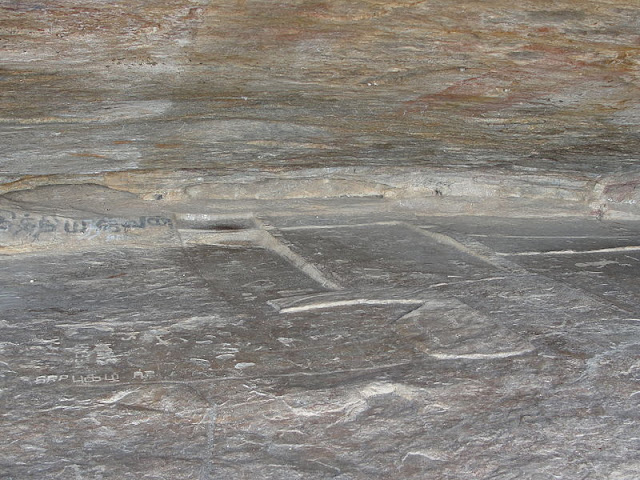Ezhadippattam, Sittannavasal
The Ezhadippattam is the name given to a natural cavern where
over more than a thousand years since 1st century BC, Jaina ascetics practiced
severest penance such as kayotsarga (meditation till salvation in standing
posture) and sallekhana (fasting unto death).
Presently the ASI had installed an iron barricade at the
mouth of the cavern to stop vandalism. The cavern is roomy but low. The floor
is marked out into spaces for seventeen beds, each with a sort of stone pillow.
They are highly polished. Similar arrangements can be found in other parts of
India like Lomas Rishi cave of Gaya, Khandagiri Udayagiri caves of Bhubaneswar and
many places in Tamilnadu like Anamalai, Alagarmalai, Tiruvallam, etc. In
Pudukkottai itself, similar beds are there in Aluruttimalai of Narttamalai hills
and Kudumiyamalai.
Most of the beds here are inscribed. One of them, the
largest, is perhaps the oldest since it contains an inscription in Tamil in the
Tamil Brahmi script of the 1st century BC. This is one of the oldest lithic
records of South India.
The inscription reads as follows:
“Eriminatu kumizh-ur piranta kavuti-i tenku- cirupocil
ilayar ceyta atit-anam”
It mentions that one Ilaiyar of Tenkuchiruposil made this
seat for Kavuti born at Kumuzhur in Eruminaadu. It is believed that the
Kumuzhur in Eruminaadu refers to a place in the present Vellore district.
By the other beds, names of other Jaina ascetics
practiced sallekhana are inscribed. Thus, there are number inscriptions of 7th
to 10th centuries AD. These inscriptions show that for about 1000 years from
the 1st century BC this cavern was a resort of Jaina ascetics.

















